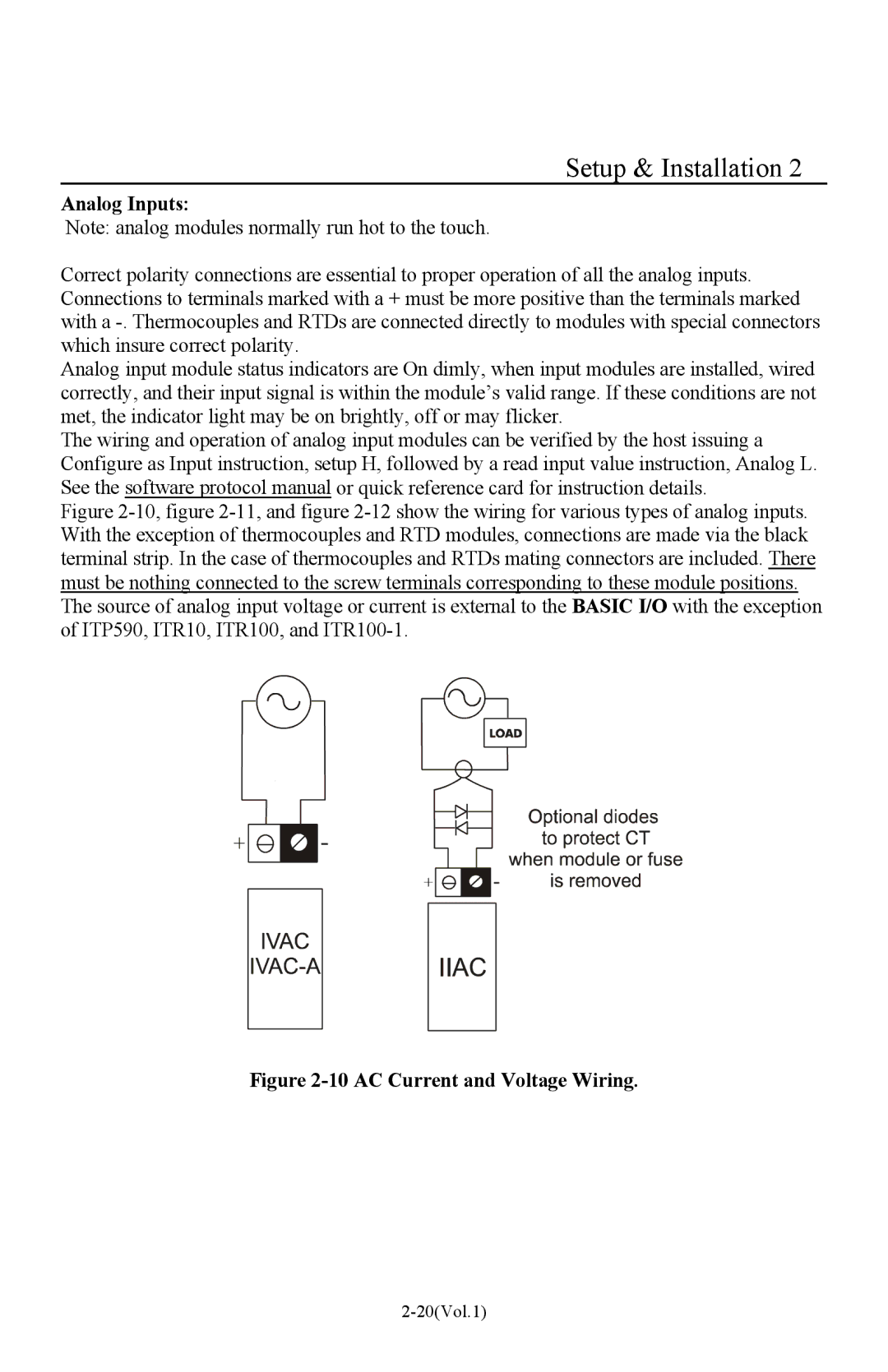
Setup & Installation 2
Analog Inputs:
Note: analog modules normally run hot to the touch.
Correct polarity connections are essential to proper operation of all the analog inputs. Connections to terminals marked with a + must be more positive than the terminals marked with a
Analog input module status indicators are On dimly, when input modules are installed, wired correctly, and their input signal is within the module’s valid range. If these conditions are not met, the indicator light may be on brightly, off or may flicker.
The wiring and operation of analog input modules can be verified by the host issuing a Configure as Input instruction, setup H, followed by a read input value instruction, Analog L. See the software protocol manual or quick reference card for instruction details.
